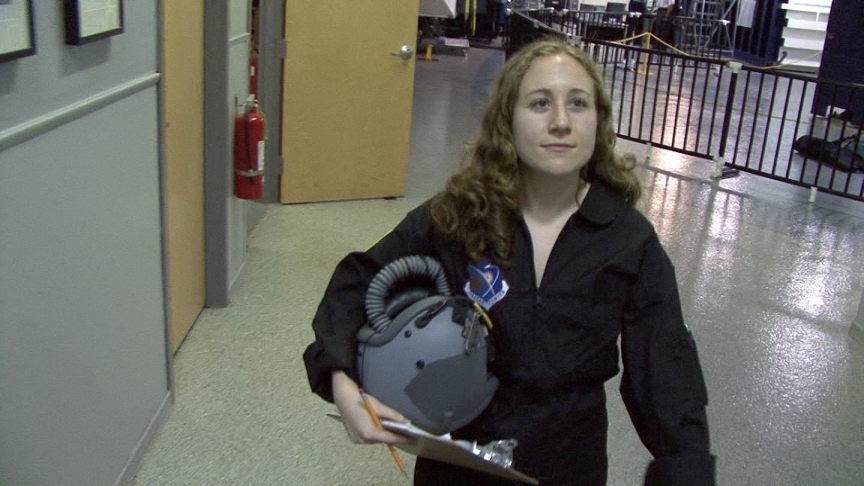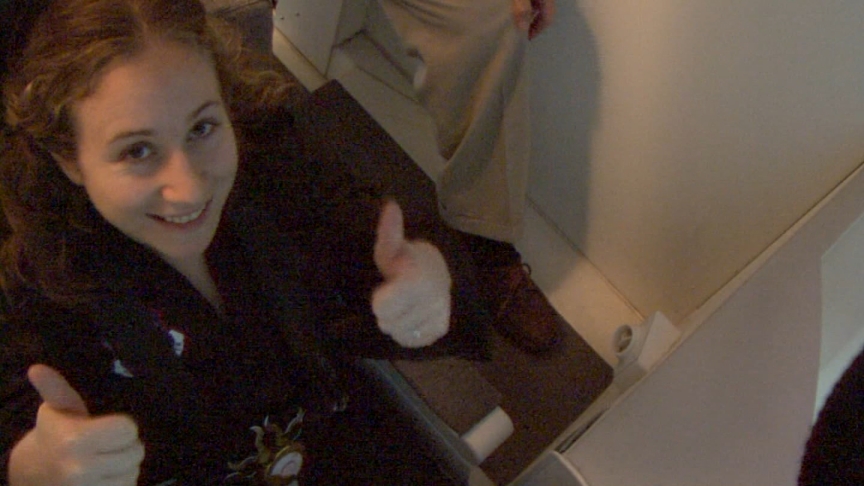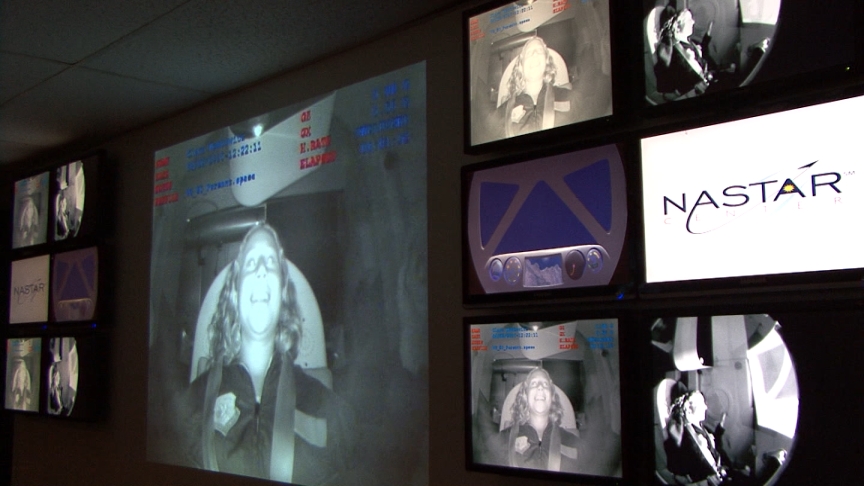Pulling 6 Gs: A Wild, Intense Ride Awaits Space Tourists

This story is part of a SPACE.com series to mark a decade of space tourism. Coming Wednesday: An in-depth look at the flight of Dennis Tito, the world's first space tourist.
I've never been to space, but I've felt the closest thing there is to a spaceship ride on the ground.
As suborbital jaunts to space promise to become available soon to anyone with a couple hundred thousand dollars to spare, I can tell those considering a trip: You're in for a wild ride.
Anniversary of space tourism
The first space tourist, American millionaire Dennis Tito, made the inaugural passenger trip to space aboard a Russian Soyuz rocket on April 28, 2001. He reportedly paid $20 million for the privilege. [Q & A: World's First Space Tourists]
Ten years later, space is becoming more accessible than ever. Six people have followed in Tito's footsteps as passengers on Soyuz voyages, and soon a slew of cheaper suborbital spacecraft should be available to tourists.
At about $200,000 a pop, these spaceships – such as Virgin Galactic's SpaceShipTwo – would take passengers to space for about five minutes, and then plunge back to the ground before making a complete orbit around the Earth.
Breaking space news, the latest updates on rocket launches, skywatching events and more!
SpaceShipTwo would subject riders to up to 6 Gs – that's six times the normal force of gravity. Having felt such a load myself, I can tell you, it's pretty intense. [Video: SpaceShipTwo's First Solo Glide Test.]
Suborbital trainee
I was lucky enough to participate in the suborbital scientist training program with seven others at the National Aerospace Training and Research Center (NASTAR) in Southampton, Pa. Over three days, the eight of us trainees practiced enduring additional forces of gravity in a centrifuge. We were strapped into a carriage on the end of the machine's 25-foot (7.6 meter)-long arm and spun around until the centrifugal force packed on what felt like the weight of an elephant onto our chests. [Photo Gallery of My Spaceflight Training Course]
We experienced G loads on two axes: one pointing down from our heads to our toes, and one pointing into our chests. The trainers started us off easy, with just a few times the normal force of gravity pressing against us. Even this is a bizarre sensation. The force pounding on my chest pressed down into my lungs, making it hard to breathe. The force going down toward my feet was even worse, making my toes feel heavy and my head too light.
The program culminated on day three with a full flight simulation of a ride on SpaceShipTwo (modeled on the ship's predecessor, SpaceShipOne, built by Scaled Composites). This trip subjects riders to 3.5 Gs in both directions during ascent, and 6 Gs into your chest and 1.5 Gs along your length during descent.
While I can only imagine what the real thing will feel like, NASTAR's version aims to come pretty darn close. In addition to the extra gravity, I felt my seat vibrate and saw a full-screen view of the ground getting smaller and smaller below me.
Almost like the real thing
The strangest part for me was the kick during ascent when SpaceShipTwo is dropped from its mother ship, called WhiteKnightTwo, in midair, and the spaceship's engines ignite, propelling the craft the rest of the way up to space. All of a sudden I was accelerated up to 3.5 Gs after only a few seconds. I was caught off guard and screamed my lungs off as the Gs just kept building.
Once my simulated spacecraft had reached space, I felt a blissful few moments of "weightlessness." While I was still feeling the normal 1 G force of gravity, in comparison to the loads that had just been lifted, I did feel extremely light, almost as if I was floating.
The break was over soon enough, though, as it was time for my spaceship to come back down to Earth. The return trip was even more intense, packing on 6 Gs in one direction and 1.5 Gs in the other as I plummeted to the ground.
In order to push my lungs out against the overwhelming weight on my chest, I had to practice a special pressure breathing technique we had learned during the training. The force along the other axis was trying to pull all my blood down to my feet. Quickly I felt lightheaded, and then my vision started tunneling, the edges blurring into black.
Luckily, we had learned techniques for this, too. To keep blood in my head and prevent myself from blacking out, I had to squeeze my arm and leg muscles as tight as I could, blocking too much blood from pooling there and forcing it to stay in my brain. The maneuver involves grunting "hut!" like a football player to boot.
Soon enough, the ride was over, and I was almost as proud of myself for not blacking out or throwing up as I would have been on a real ride to space.
I hope that space tourists signing up for Virgin Galactic's SpaceShipTwo know what they're in for. The incredible ride beats any roller coaster I've ever been on, and it certainly isn't for the faint of heart.
But the physical strains apparently haven't dissuaded the more than 400 passengers who've already bought tickets for SpaceShipTwo, which is set to carry its first passengers sometime next year.
You can follow SPACE.com senior writer Clara Moskowitz on Twitter @ClaraMoskowitz. Follow SPACE.com for the latest in space science and exploration news on Twitter @Spacedotcom and on Facebook.

Clara Moskowitz is a science and space writer who joined the Space.com team in 2008 and served as Assistant Managing Editor from 2011 to 2013. Clara has a bachelor's degree in astronomy and physics from Wesleyan University, and a graduate certificate in science writing from the University of California, Santa Cruz. She covers everything from astronomy to human spaceflight and once aced a NASTAR suborbital spaceflight training program for space missions. Clara is currently Associate Editor of Scientific American. To see her latest project is, follow Clara on Twitter.


